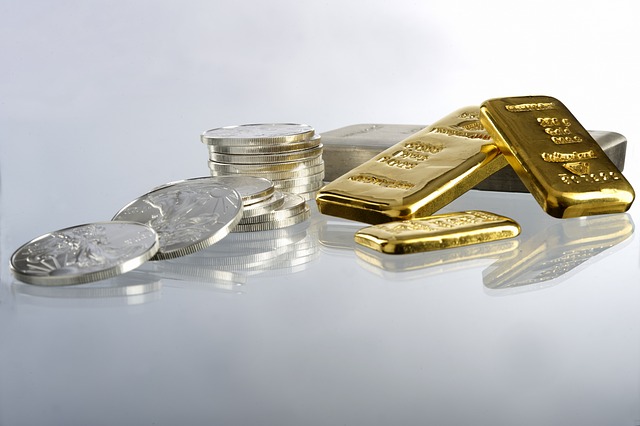Are you hesitating whether to invest in silver or gold? As we are slowly moving to a post-pandemic era, investors are searching for ways to get prepared for future uncertainties. 
An investment in these metals might be the solution. Both of them provide a hedge in a potential market downturn and during rising inflation. Each metal offers specific attributes that lead to strategic investments. In order to make the most reasonable decision, you should understand the differences between their uses, technical features, and economic sensitivities.
The following aspects of comparison break down these differences.
Liquidity
The primary point of comparison between gold and silver is in terms of liquidity. The gold market has demonstrated greater liquidity, and it’s much larger regarding its annual supply value as well. The silver market offers less liquidity but a slightly higher risk level in view of investing opportunities.
Moreover, better liquidity facilitates the investment efforts of individuals interested in making substantial gold purchases or sales by not experiencing any movements in the commodity’s price. The reported lack of liquidity in the silver market could encourage investors to opt for gold. Nevertheless, the difference in liquidity isn’t supposed to be an issue for investors looking to trade volumes of smaller size.
Volatility
The second aspect of comparison between these two precious metals is volatility. Precious metal companies, such as Boston Bullion, help investors with their financial decisions. The volatility of silver can be seen as its biggest advantage and its largest disadvantage, depending on how much risk you’re willing to take as an investor. Greater volatility results in tremendous price swings, which traders can exploit to their benefit.
The volatility of the white metal can be best explained by looking at the market size. The value of this asset rises more dramatically when market conditions are favorable, but it drops with the same intensity when things go wrong. Therefore, investors should be emotionally prepared for its high volatility. Sometimes, volatility is the best friend of investors, especially considering the performance of silver in the bull market.
Nevertheless, investors aren’t supposed to neglect the fact that volatility boosts the risk level. For instance, during the peak of the COVID-19 pandemic, the white metal dropped significantly more compared to gold. Therefore, short-term investors are recommended to be wise enough and exit trades when the price trend experiences a downward movement. The ability of investors to spot such turning points can be challenging even for experienced investors.
Diversification
The following point of comparison between gold and silver is diversification. Most investors have a tendency to invest in these assets because of their negative correlation with other securities, which minimizes the overall portfolio risk. As far as diversification is concerned, the former has an advantage over the latter.
When the economy is performing well, the industrial demand for the white metal increases and affects prices. In contrast, gold has almost no industrial uses. Learn more about the gold standard. Therefore, it remains uncorrelated and disconnected from virtually everything. However, both assets are preferred as portfolio diversifiers, as their potential in diversifying investments is unparalleled.
Storage expenses
Investors should be aware of the costs associated with gold and silver investments, particularly related to insurance and storage. In the event of a theft, precious metals are much harder to trace. Hence, investors need to store their holdings in secure facilities or vaults. Such storage imposes charges for renting the space, insuring the assets, and transporting the assets upon making a purchase or selling them.
Nevertheless, storage costs are determined differently in both types of investments. Investors are required to rent much more space for storing silver than for storing gold, provided they make the same investment in both metals. Since the storage of the former requires more space, it’s unsurprising that the costs are higher as well.
The same difference applies to transport too. Gold is considered much easier and more affordable to transport. Since the white metal is prone to tarnishing over time, it has to be stored in a dry facility where no exposure to weather elements is present. Conversely, gold isn’t susceptible to tarnishing, is much lighter, and is less challenging to transport.
Affordability
The next point of comparison between these metals is affordability. Needless to say, silver is far more affordable for average investors. It’s far more practical in comparison to gold for making small purchases. The affordability of this asset makes it perfect for gifting. Investors with small budgets are better suited with the white metal as an investment alternative. Conversely, gold requires a larger budget, and it’s more appropriate for large purchases.
Industrial use
Another comparison aspect to think about is the industrial use of both metals. Only about twelve percent of the gold supply is applied for its industrial uses compared to the 56% of silver used in different industries. The applications of the latter are so many that one day all products are expected to contain some. The following URL, https://www.businessinsider.com/many-uses-of-gold-2012-9, explains some of the most practical uses of gold.
On the same note, this metal has shown to be indispensable due to its electronic conductivity, thermal conductivity, and reflection. The existence of modern life is largely dependent on it. Nevertheless, once industrial silver is used, it gets thrown away, which limits the metal amount that can be returned through recycling.
Millions of ounces end up lost each year. Consequently, supply has no other alternative but to meet demand. Investors should know that industrial silver demand is high when the economy is strong but substantially weaker in deflation or recession.
It’s also worth knowing that during a monetary crisis, this asset’s role as money has had a greater impact on its price throughout history. There’s probably one financial situation that forces silver to perform badly, referring to a deflationary depression like the Great Depression.
Final word
While both metals appeal to investors, each one is specific in its own way.
Make the right choice!
Related Posts: